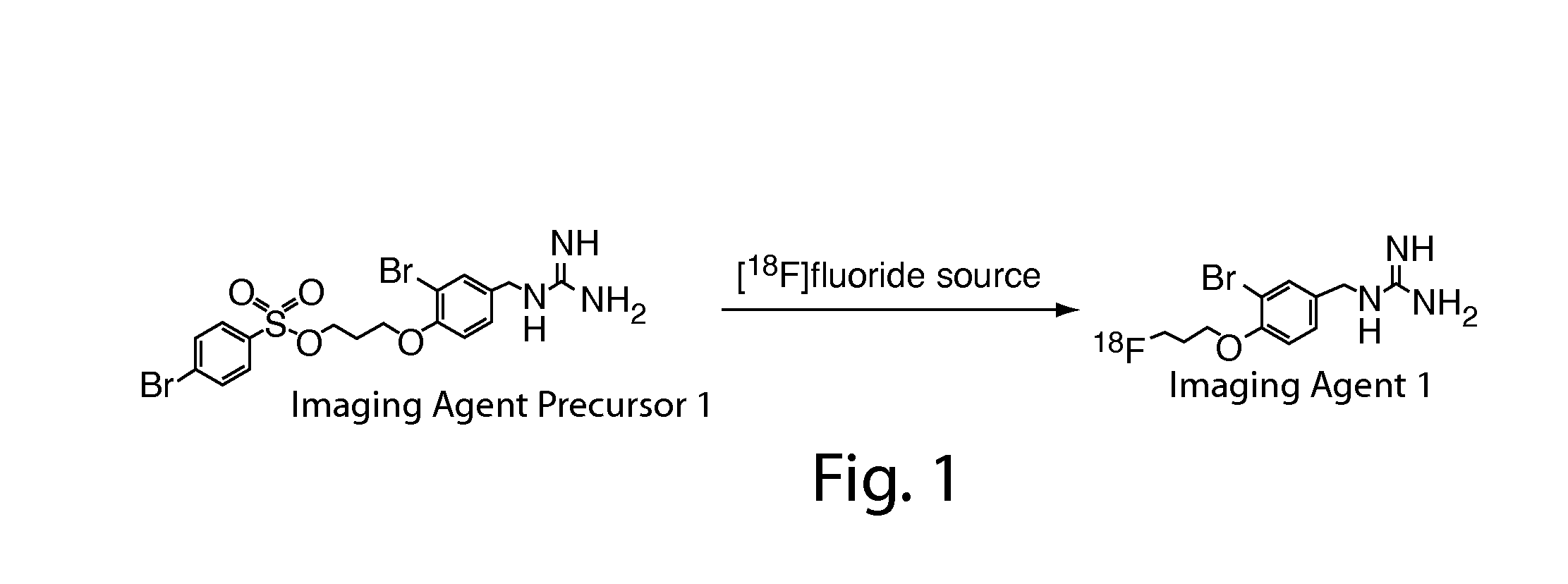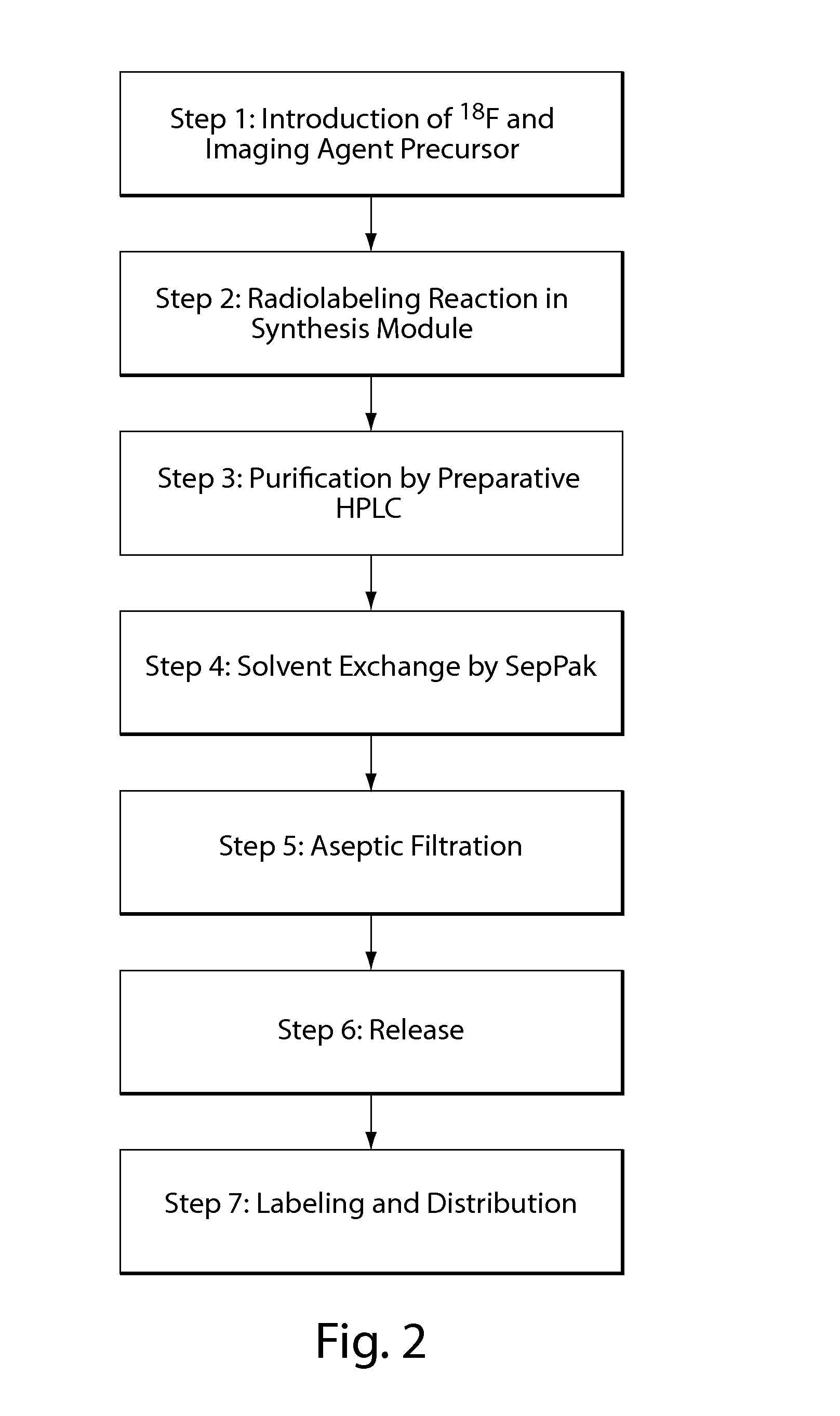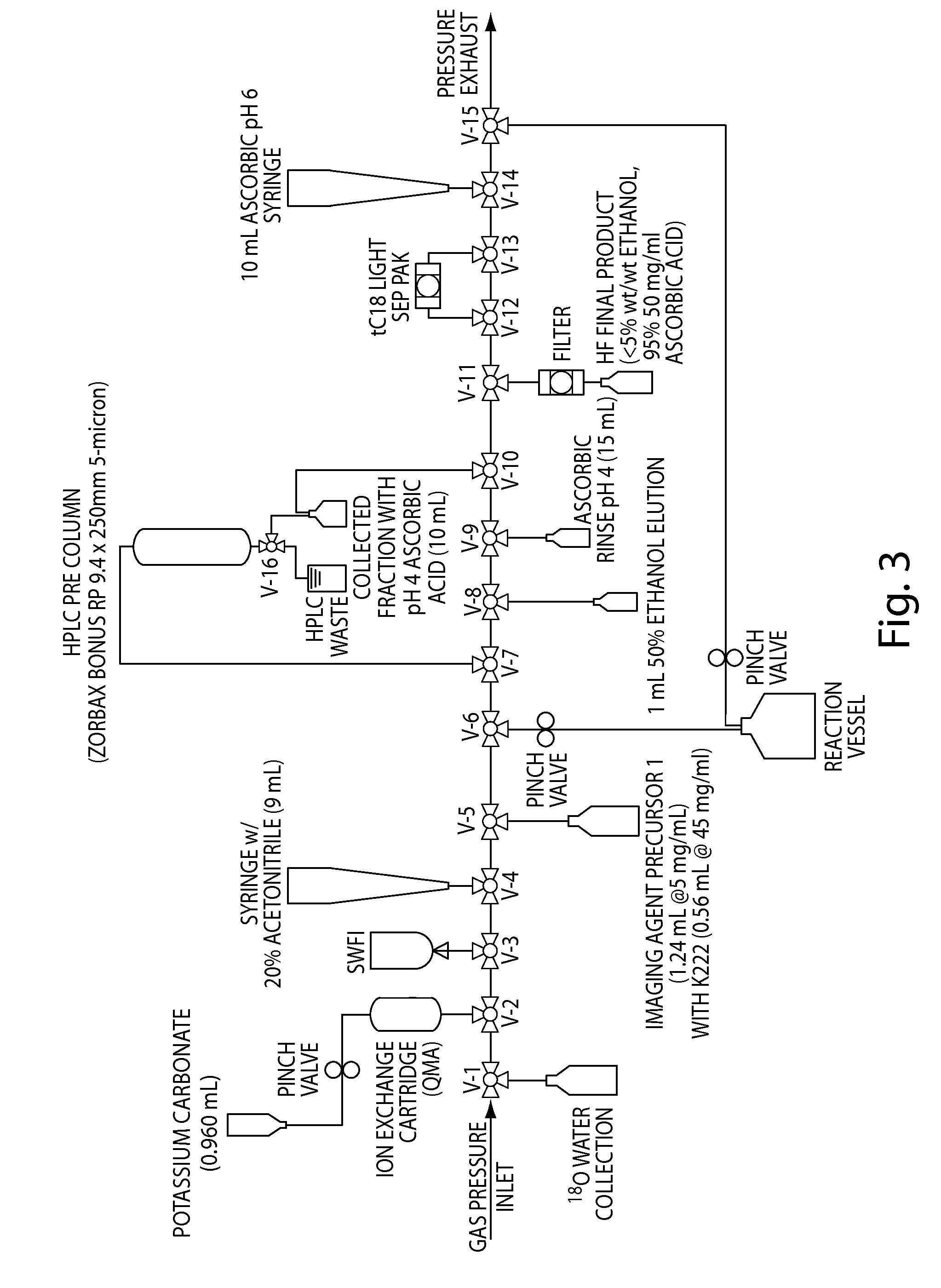Compositions, methods, and systems for the synthesis and use of imaging agents
a technology of imaging agents and compositions, applied in the field of synthesizing imaging agents, can solve the problems of reduced overall myocardial efficiency and eventual progression to clinical hf, low chemical fidelity, and low chemical efficiency
- Summary
- Abstract
- Description
- Claims
- Application Information
AI Technical Summary
Benefits of technology
Problems solved by technology
Method used
Image
Examples
example 1
Synthesis of 3-(4-((1,2-Bis(tert-butoxycarbonyl)guanidino)methyl)-2-bromophenoxy)propyl 4-methylbenzenesulfonate
[0374]
example 1a
Synthesis of 1,2-bis(tert-butoxycarbonyl)-1-[3-bromo-4-(3-hydroxypropoxy)benzyl]-guanidine
[0375]
[0376]To a solution of 1,2-bis(tert-butoxycarbonyl)-1-[3-bromo-4-hydroxybenzyl]-guanidine (for synthesis, see, for example, Purohit et al., International PCT Patent Publication No. WO2008 / 083056, incorporated herein by reference) (2.0 g, 4.51 mmol) dissolved in anhydrous DMF (45 mL) was added K2CO3 (1.12 g, 8.13 mmol), and 3-bromopropanol (816 mg, 5.87 mmol) and the reaction mixture warmed to 50° C. using an oil bath. After 2 h, the reaction mixture was diluted with water (30 mL), and the aqueous layer separated then extracted with EtOAc (3×100 mL). The combined organic layers were dried over MgSO4, filtered and concentrated to a solid. The crude material was purified using silica gel chromatography (4:1 to 3:2 hexanes:EtOAc) to yield a white solid product (2.00 g, 88% yield). 1H NMR (CDCl3, 600 MHz): δ 9.42 (brs, 1H), 9.27 (brs, 1H), 7.54 (d, J=1.8 Hz, 1H), 7.26 (m, 1H), 6.85 (d, J=2.4 H...
example 1b
Synthesis of 3-(4-((1,2-bis(tert-butoxycarbonyl)guanidino)methyl)-2-bromophenoxy)propyl 4-methylbenzenesulfonate
[0377]
[0378]To a solution of the product of Example 1A (339 mg, 0.676 mmol) dissolved in anhydrous CH2Cl2 (6.76 mL) was added TsCl (155 mg, 0.812 mmol), DMAP (99 mg, 0.812 mmol) and Et3N (0.141 mL, 1.01 mmol). The reaction mixture was stirred at room temperature for 1.5 h then concentrated to a yellow oil. The crude material was directly purified using silica gel chromatography (4:1 hexanes:EtOAc) to yield a colorless oil (384.3 mg, 87% yield). 1H NMR (CDCl3, 600 MHz): δ 7.74 (d, J=8.4 Hz, 2H), 7.50 (d, J=1.8 Hz, 1H), 7.21 (m, 3H), 6.70 (d, J=8.4 Hz, 1H), 5.08 (brs, 2H), 4.30 (t, J=6.0 Hz, 2H), 4.00 (t, J=6.0 Hz, 2H), 2.37 (s, 3H), 2.16 (m, 2H), 1.51 (s, 9H), 1.43 (s, 9H); 13C NMR (CDCl3, 150 MHz): δ 160.6, 154.9, 154.0, 145.0, 133.0, 132.9, 132.7, 130.0, 128.0, 112.9, 111.9, 84.7, 79.0, 67.0, 64.1, 46.4, 29.0, 28.5, 28.2, 21.8.
PUM
| Property | Measurement | Unit |
|---|---|---|
| temperature | aaaaa | aaaaa |
| temperature | aaaaa | aaaaa |
| temperature | aaaaa | aaaaa |
Abstract
Description
Claims
Application Information
 Login to View More
Login to View More - R&D
- Intellectual Property
- Life Sciences
- Materials
- Tech Scout
- Unparalleled Data Quality
- Higher Quality Content
- 60% Fewer Hallucinations
Browse by: Latest US Patents, China's latest patents, Technical Efficacy Thesaurus, Application Domain, Technology Topic, Popular Technical Reports.
© 2025 PatSnap. All rights reserved.Legal|Privacy policy|Modern Slavery Act Transparency Statement|Sitemap|About US| Contact US: help@patsnap.com



